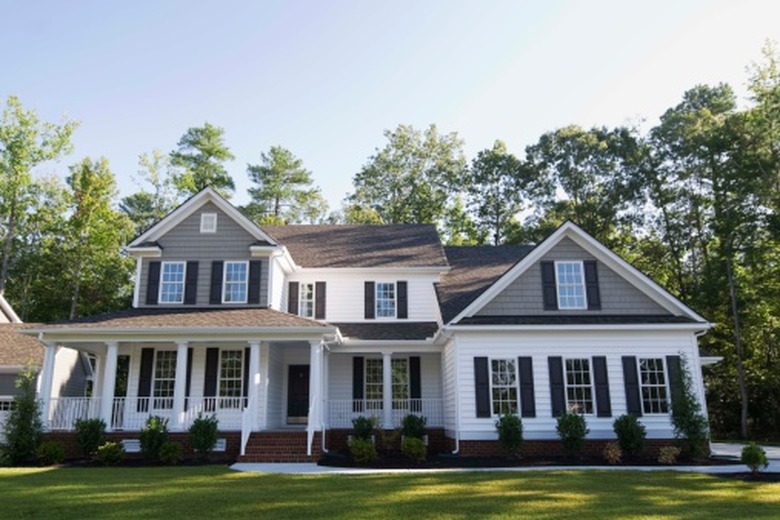How To Cure Brown Patches In St. Augustine Grass
Brown patch is a common fungal disease in susceptible types of St. Augustine grass, especially during humid weather, according to University of Florida Extension. It most commonly occurs in the spring and fall, and risk increases with high nitrogen levels. Lawns stressed by drought, heat, pests or other disease show higher susceptibility to brown patch as well. Curing this disease proves easiest in its early stages.
Step 1
Identify brown patch in the grass early, before it spreads throughout the lawn. Look for yellowing grass that pulls easily from the stem or stolon, in addition to brown patches. In larger areas of infection, look for green grass in the center of brown patches.
- Brown patch is a common fungal disease in susceptible types of St. Augustine grass, especially during humid weather, according to University of Florida Extension.
- Look for yellowing grass that pulls easily from the stem or stolon, in addition to brown patches.
Step 2
Apply a fungicide to the lawn as soon as possible, treating both currently and previously affected areas for best results. Bayleton, chlorothalonil and PCNB all work well against brown patch, according to Texas A&M University Extension. Follow label instructions for the specific brand of fungicide you buy.
Step 3
Conduct only minimal maintenance on your St. Augustine grass. Mow grass at a higher height of 2 to 3 inches. This adds protection for the grass and reduces stress, encouraging healthy growth. Avoid overwatering and excessive fertilization. Provide 1/2 inch to 3/4 inch of water only when grass shows signs of wilting, suggests University of Florida Extension. Limit nitrogen fertilizer applications to no more than 1 lb. per 1,000 square feet every 30 to 60 days.
- Apply a fungicide to the lawn as soon as possible, treating both currently and previously affected areas for best results.
Care Of St. Augustine Grass
St. Augustine grass (Stenotaphrum secundatum) is a tropical grass that is the most popular turf from Florida to central Texas. It naturally forms a dense turf and also has a good salt tolerance. If you're looking for a dense turf that thrives in a warm, coastal climate, you can't do better than St. Augustine grass. The turf is an attractive green and grows well in most types of soil. Normally a solid green, the grass turns a bluish hue when it needs water. When you do irrigate, do it in the morning and water deeply, to a depth of 3 or 4 inches, to encourage deeper roots. Alternatively, walk across your lawn, watching your footprints. Keep your grass thick and healthy by mowing with a sharp blade. If you mow grass shorter than this, you'll stress the grass and leaf blades, which will make the blades look less green. Dull lawn mower blades make rough cuts, causing the grass to look brown. Primary diseases of St. Augustine turf include brown patch, take-all root rot and gray leaf spot. These occur in hot, wet weather. Excess nitrogen and irrigation can encourage these diseases, so keep to the program. You can also scatter organic matter on the grass. If your lawn has been long neglected, you may be more interested in repairing your St. Augustine grass than maintaining it. What exactly should you do? First, make a "keep off the grass" rule for the indefinite future.
- St. Augustine grass (Stenotaphrum secundatum) is a tropical grass that is the most popular turf from Florida to central Texas.
- If you're looking for a dense turf that thrives in a warm, coastal climate, you can't do better than St. Augustine grass.
Warning
Brown patch takes time to cure in a lawn. Expect a significantly healthier lawn only in the growing season following the start of treatment, according to Texas A&M University Extension.
References
- Texas A&M University Extension: St. Augustine Grass
- Texas A&M University Extension: Be on the Lookout for Brown Patch
- Lawn Care Academy: St.Augustine Grass
- All About Lawns: Planting St. Augustine Grass
- Aggie Horticulture: St. Augustine Grass
- Clemson.edu: St. Augustine Grass
- Saint Augustine Lawn Care: Repair a Damaged St. Augustine Lawn
